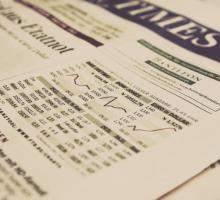The economy of Argentina is in a dangerous situation:
- capital outflows
- high inflation
- low growth or negative economic growth (we will see the statistics for the current semester in a few weeks).
- fiscal deficit
The dynamic behavior of all this variables is worsening. In Latin America, Venezuela is the only country that has stagflation.
¿How did Argentina land into this situation? When the government of Mauricio Macri started, it quickly liberalized the capital market and took fiscal measures to reduce the enormous deficit, hoping to:
- reduce monetary emission
- reduce inflation
- achieve a stable exchange rate accepted by the market without big interventions from the central bank
- increase of private investment, that should have had a positive impact in economic growth and demand for local currency
But one of the biggest mistakes of the economic policy was the liberalization of the capital account before fiscal variables where in a sustainable trajectory, mainly inflation and fiscal deficit, if we take into consideration that this government doesn’t want to use consumption as a fuel for economic growth, like the previous government.
Capital markets reactions are much faster than real markets. Fiscal policy can take years to take effect. Even more if we consider that Argentina have had high inflation during several years, and part of the inflation is inertial.
At the same time, capital markets reactions have an impact on other variables that can have a negative influence in fiscal policy. When the central bank let the exchange rate appreciate, it had a negative impact on the inflation rate, that canceled the attempt to reduce inflation via a lower fiscal deficit and monetary emission.
Then, the central bank took measures to control the exchange rate, but kept using a wrong instrument for it: the interest rate. This policy was already used in the previous administration. The nominal interest rate in local currency nominated short term bonds (the central bank used mainly an instrument called LEBAC) achieved levels of 40%.
The use of the exchange rate to control the exchange has two issues:
1- The high interest rate has a negative in local investment and economic growth, which in turn lowers the demand for Argentine pesos.
2- The bonds must be canceled in the future. This means that it’s a temporary solution.
In a third phase, when the exchange rate was already out of control and the Central Bank lost reliance from the markets, the Central Bank announced that it will reduce the quantity of short therm bonds. But it means it will have to buy them with local currency. If this is the case, the pesos used to buy this bonds will be used to buy US dollars or assets nominated in dollar. If that is the case, it will be an additional pressure on the exchange rate.
TL;DR
The economy of Argentina is in a complicated situation. A big mistake was opening the capital account before the real economy were in a sustainable path. Another mistake was using the interest rate as an instrument for controlling the exchange rate.




